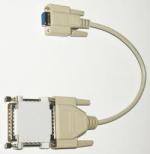Article: A developer’s review of REDSonic’s Embedded Linux toolkit
Feb 22, 2002 — by LinuxDevices Staff — from the LinuxDevices Archive — 4 viewsForeword: This article is the fifth in LinuxDevices.com's series of reviews of Embedded Linux toolkits by embedded developer Jerry Epplin. In order to gain insight into the use of each toolkit from the developer's perspective, Epplin builds Embedded Linux OS images for three different x86-based EBX form-factor single-board computers using each toolkit. Each of the toolkits is then evaluated against a common set of criteria which include ease of use, overall toolkit architecture, methods of package management, diversity of platform support, and openness of the source code. In this installment, Epplin takes a close-up look at REDSonic's RED-Builder 2.0 XE toolset.
Note: Subsequent to (and in response to) this review, REDSonic has eliminated the “dongle” discussed in the first portion of this review. See this announcement for futher details.
First impressions
Many may consider REDSonic to be a minor player in the Embedded Linux market, with significantly less prominence than the products offered by Lineo, MontaVista, Red Hat, and LynuxWorks. But as we will see, REDSonic's RED-Builder has some features and characteristics that are quite competitive with the other Embedded Linux toolsets.
Sadly, however, getting to this realization requires getting past an extremely unfavorable initial reaction. Let me explain.

It is difficult to imagine what REDSonic hopes to accomplish with this move. As the only Embedded Linux toolkit vendor having such a requirement, it puts them at a definite disadvantage and makes the other proprietary toolkit vendors look progressive by comparison.
To make matters worse, the dongle is not one of the less-intrusive parallel port units that allow you to plug your printer into its back end and operate normally (though even these often fail in annoying ways). Instead, it connects to a 9-pin serial port via a short cable with a 25-pin connector on the other end. A unit that looks like a conventional parallel port dongle connects to the end of the cable. But don't plug that unit into your parallel port, skipping the cable; only the serial port configuration works.
So, besides the expected inconveniences of using a dongle, you must sacrifice a serial port to REDSonic's mistrust of you. This is especially obnoxious at a time when many computers come fitted with only one serial port, and a few actually have none brought to the outside of the case by default. At any rate, dealing with a dongle while preparing this review on my laptop at multiple locations left this reviewer in a decidedly nasty mood.
I'll save you some trouble in your efforts to free yourself, by the way. Poking around with a Python decompiler won't help; user interface components of RED-Builder are built with Python, but the dongle check code appears to be in the binary file /usr/share/apps/redbuilder/rb3, requiring some binary hacking work.
Beyond the dongle
If I were reading this review, I'd be inclined to stop reading at this point, since for me buying a product with such an obnoxious copy protection scheme is out of the question regardless of its features. You may, however, be interested in what RED-Builder has to offer in any case. It turns out that RED-Builder has some good features and characteristics that bear mentioning. If, at some point, REDSonic comes in line with the other Embedded Linux toolkit vendors by eliminating the dongle, they will have a very competitive product.
RED-Builder lists reasonable host system requirements of a 700MHz CPU, 64MB RAM with 128MB recommended, and 350MB of hard disk space. Installation is RPM-based — REDSonic lists Red Hat 6.2, 7.0, and 7.1; Mandrake 7.1, 7.2, and 8.0; and OpenLinux 2.4 as supported host platforms. I performed this review without problems on my 700MHz, 256MB laptop running Red Hat 7.2.
Story navigation . . .
- Part 1: First impressions
- Part 2: Initial installation
- Part 3: Creating a project
- Part 4: Flexibility and extensibility
This article was originally published on LinuxDevices.com and has been donated to the open source community by QuinStreet Inc. Please visit LinuxToday.com for up-to-date news and articles about Linux and open source.